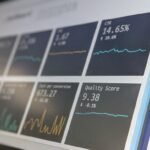Predictive analytics has emerged as a transformative force across various sectors, including education. This analytical approach utilizes statistical algorithms and machine learning techniques to identify the likelihood of future outcomes based on historical data. In the educational context, predictive analytics serves as a powerful tool for understanding student behaviors, academic performance, and potential challenges they may face.
By leveraging vast amounts of data collected from various sources, educational institutions can make informed decisions that enhance student success and institutional effectiveness. The application of predictive analytics in education is not merely about crunching numbers; it involves a nuanced understanding of the factors that contribute to student achievement and retention. For instance, by analyzing patterns in attendance, grades, and engagement levels, educators can gain insights into which students may be at risk of falling behind.
This proactive approach allows institutions to implement targeted interventions before issues escalate, ultimately fostering a more supportive learning environment. As educational institutions increasingly adopt data-driven strategies, the role of predictive analytics becomes ever more critical in shaping the future of education.
Key Takeaways
- Predictive analytics uses data, statistical algorithms, and machine learning techniques to identify the likelihood of future outcomes based on historical data.
- Early identification of at-risk students is crucial for providing timely intervention and support to improve their academic performance and overall well-being.
- Data collection and analysis for predictive analytics in education involves gathering student information, academic records, attendance, behavior, and other relevant data to identify patterns and trends.
- Key predictive indicators for at-risk students may include attendance patterns, course grades, behavior incidents, and demographic factors such as socioeconomic status and family background.
- Implementing predictive analytics in educational institutions requires collaboration between educators, administrators, and data analysts to develop effective intervention strategies and support systems for at-risk students.
Importance of Early Identification of At-Risk Students
Identifying at-risk students early in their academic journey is crucial for several reasons. First and foremost, early identification allows educators to intervene before students experience significant setbacks. Research has shown that students who struggle in their early years are more likely to continue facing challenges throughout their academic careers.
By recognizing warning signs such as declining grades or increased absenteeism, educators can provide timely support that addresses the root causes of these issues. Moreover, early identification fosters a culture of care and support within educational institutions. When students feel that their well-being is prioritized, they are more likely to engage positively with their learning environment.
This sense of belonging can be particularly important for marginalized groups who may already face systemic barriers to success. By implementing systems that prioritize early identification, schools can create an inclusive atmosphere where all students have the opportunity to thrive.
Data Collection and Analysis for Predictive Analytics
The foundation of effective predictive analytics lies in robust data collection and analysis processes. Educational institutions must gather a diverse array of data points to create a comprehensive picture of student performance and behavior.
The integration of these varied data sources is essential for developing accurate predictive models. Once data is collected, it must be analyzed using sophisticated statistical techniques and machine learning algorithms. These methods can uncover hidden patterns and correlations that may not be immediately apparent through traditional analysis.
For example, a school might discover that students who frequently miss classes are also more likely to receive lower grades, indicating a potential need for intervention. By employing advanced analytical tools, educators can transform raw data into actionable insights that inform decision-making processes.
Key Predictive Indicators for At-Risk Students
Identifying key predictive indicators is a critical step in the predictive analytics process. Various factors can signal that a student may be at risk of academic failure or disengagement. Common indicators include poor attendance records, declining grades, and lack of participation in class activities.
However, more nuanced indicators can also provide valuable insights. For instance, social-emotional factors such as anxiety or depression can significantly impact a student’s ability to perform academically. Additionally, demographic factors such as socio-economic status, family background, and prior educational experiences can serve as important predictors of student success.
For example, students from low-income families may face additional challenges that affect their academic performance, such as limited access to resources or support systems. By considering a holistic range of indicators, educators can develop a more accurate understanding of which students may require additional support and tailor interventions accordingly.
Implementing Predictive Analytics in Educational Institutions
The implementation of predictive analytics in educational institutions requires careful planning and collaboration among various stakeholders. First, schools must establish a clear framework for data governance to ensure that data is collected ethically and securely. This includes obtaining consent from students and parents for data usage and ensuring compliance with privacy regulations such as FERPA (Family Educational Rights and Privacy Act) in the United States.
Once a solid data governance framework is in place, institutions can begin to develop predictive models tailored to their specific needs. This often involves collaboration between educators, data scientists, and administrators to ensure that the models align with educational goals and priorities. Training staff on how to interpret and act upon predictive insights is also essential; educators must feel equipped to utilize the information effectively in their teaching practices.
Benefits of Early Identification and Intervention
The benefits of early identification and intervention through predictive analytics are manifold. One of the most significant advantages is the potential for improved student outcomes. By addressing issues before they escalate, schools can help students stay on track academically and socially.
For instance, targeted interventions such as tutoring programs or counseling services can be implemented for at-risk students based on predictive insights, leading to enhanced academic performance and increased retention rates. Furthermore, early intervention can lead to cost savings for educational institutions. By preventing dropouts or significant academic failures, schools can reduce the financial burden associated with remediation programs or re-enrollment efforts.
Additionally, fostering a positive school climate through proactive support measures can enhance overall student satisfaction and engagement, contributing to a more vibrant learning community.
Challenges and Ethical Considerations in Predictive Analytics
Despite its potential benefits, the use of predictive analytics in education is not without challenges and ethical considerations. One major concern revolves around data privacy and security.
The ethical implications of using predictive analytics also raise questions about fairness; there is a risk that certain groups of students may be unfairly labeled as “at-risk” based on biased algorithms or incomplete data. Moreover, reliance on predictive models can lead to overgeneralization or misinterpretation of individual student needs. Educators must remain vigilant against the temptation to view students solely through the lens of data points; each student’s experience is unique and cannot be fully captured by algorithms alone.
Striking a balance between leveraging data insights and maintaining a human-centered approach to education is essential for ethical implementation.
Future Trends in Predictive Analytics for Education
As technology continues to evolve, so too will the landscape of predictive analytics in education. One emerging trend is the integration of artificial intelligence (AI) into predictive models, allowing for more sophisticated analyses that can adapt over time based on new data inputs. AI-driven systems have the potential to provide real-time insights into student performance, enabling educators to respond swiftly to emerging challenges.
Another trend is the increasing emphasis on personalized learning experiences driven by predictive analytics. As institutions gather more granular data about individual student preferences and learning styles, they can tailor educational experiences to meet diverse needs effectively. This shift towards personalization not only enhances student engagement but also promotes equity by ensuring that all learners receive the support they require to succeed.
In conclusion, predictive analytics represents a powerful tool for enhancing educational outcomes through early identification and intervention strategies. By harnessing the potential of data-driven insights while navigating ethical considerations, educational institutions can create supportive environments that foster student success in an increasingly complex world.









